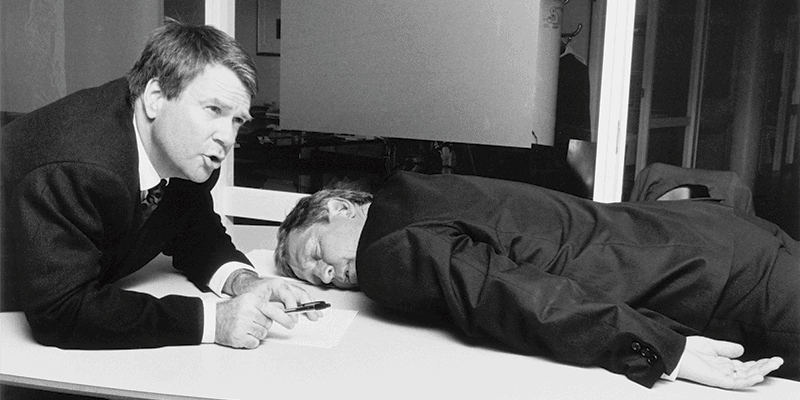Hva er den beste vanen for å forandre og forbedre livet ditt?
Den ultimate vanen
Som ringen i «Ringenes herre», er det én vane som hersker over alle de andre alle. Den er lett å komme i gang med og har stort potensiale for å skape forandring på alle områder av livet ditt når du får etablert den.
Skriv dagbok
«Å skrive dagbok, å gjøre en daglig analyse og evaluering av dine erfaringer, er en avansert aktivitet som øker selvbevisstheten og utvikler dine evner og synergien mellom dem.»
– Stephen R. Covey, forfatter av «The 7 Habits of Highly Effective People»
Å skrive dagbok, eller på engelsk, journaling, har eksistert i århundrer, selv årtusener.
Hva har disse til felles, bortsatt å være berømte og oppnådde mye innenfor sine felt: Den romerske keiseren Marcus Aurelius, statsmannen Seneca, Benjamin Franklin, Marie Curie, Mark Twain, Leonardo da Vinci, Thomas Edison og Albert Einstein? De innarbeidet alle vanen med å skrive dagbok i en eller annen form i sin daglige rutine.
Men du må gjøre litt mer ut av det enn bare å oppsummere dagens hendelser.
Det engelske «journaling» omfatter mer. Det kan løst defineres som regelmessig å reflektere over noe og skrive ting ned, enten det er i en notatbok eller på PC, nettbrett eller mobil.
Denne definisjonen av «journaling» til et allsidig verktøy som kan fylle flere funksjoner. Følgende liste viser hvorfor «journaling» er mer nyttig enn selv den beste sveitsiske Armyknife, skriver coachen Kilian Markert:
1. Creative factory
Journaling can tremendously improve your creativity and idea generation.
Chess prodigy, martial artist and author of the book “The Art of Learning” Josh Waitzkin does what is called “priming of the subconscious mind”, every night before he goes to bed. He uses his journal to write down the number one problem he is trying to solve right now and after some pondering calls it a day.
As Thomas Edison said “Never go to sleep without a request to your subconscious.”
While asleep, the subconscious mind keeps working and connects the dots to present solutions and answers to the request or problem. This is where creative breakthroughs come from.
Immediately after waking up, Josh uses his journal as some kind of “solution trap”. He tries to tap into the thoughts presented by the processing of his subconscious mind throughout the night and writes them down in his journal.
This is how enormous creative potential is unleashed, solutions to problems are found, interesting ideas can be captured on paper and the important mindset shift from a reactive to a proactive lifestyle, from the very start of the day, takes place.
2. Thought dump
On a similar note journaling can serve as a place where to dump your thoughts to simply get them out of your mind, whether it is in the morning or the evening.
Tim Ferris is a huge fan of journaling in the morning. In his book “Tools of Titans” he says that writing in a journal doesn’t have to solve your problems, but “you need to get them out of your head, where they’ll otherwise bounce around all day like a bullet ricocheting inside your skull.”
He summarizes elegantly: “I’m just caging my monkey mind on paper so I can get on with my fucking day.”
3. Compass for life
A journal is the perfect place to write down your values and true priorities. You can either use your daily journaling sessions to think about what your values are or schedule longer “thinking sessions”, for example once per week on a Sunday, to just ponder what truly matters to you and thus establish a long-term vision of how you want your life to look like in the future.
Once you gained some clarity about your values and created a vision for you life, write it down and make sure to revisit it as part of your journaling sessions. Especially in the morning this contributes to getting yourself into what Benjamin Hardy calls “peak state”.
It essentially puts things into perspective and let’s you focus on what matters most. Try to combine it with the idea of “memento mori”, the contemplation of your ephemerality and death.
This will serve as a sometimes well needed smack in the face, wake you up and give you a sense of urgency to work on your goals and serve as a guiding star for your actions during the day ahead.
4. Goal setting
Similar to the function as a compass for life, a journal can be used for goal setting. It is essential to connect your long-term life vision with what you can do here and now, establishing the connection between “somewhen” and “right now.”
As Steve Jobs said: “ You can only connect the dots going backwards”
So just begin with what the end in mind and go backwards. Break your long term vision down into long-term, yearly, monthly, weekly and then daily goals.
There is a technique which I found in Gary Kellers “The One Thing”, which is called “Goal-Setting To The Now”. Check out how to do it here.
What works for many people is to schedule the goal setting sessions according to the type of goals being set. This means at the end of a year plan for the next year, at the end of month, plan for the next month, at the end of a week, plan for the next week and at the end of a day, plan and set your to-do list for the next day.
Creating your to-do list already the day before is crucial. On the one hand you are priming your subconscious on what lies ahead and on the other hand will it be easier to just start taking action in the morning when you already know what to do.
Also, always know your — what Gary Keller calls — “One Thing”, the one task that is most important towards your long term goals and that you commit to completing, no matter what.
Put this task on top of your list and make sure to tackle it directly after your morning routine. This is the time where your brain is most capable, levels of willpower are the highest and it will make the rest of the day much easier.
5. Accountability
At the end of the day, you can also use your journal to hold yourself accountable. The following questions could serve as a starting point for reviewing your day:
a. What was good about today?
b. What could I improve?
c. Did I live up to my standards and values?
d. What did I get done?
e. How far would I get towards my long term vision if every day looked like this?
f. Any question about whether your desired habits were in place.
Apart from being regularly held accountable by a person, establishing a accountability system, that is part of your journaling session and thus easy to go through, ensures that learning never stops and each day presents at least a tiny step into the right direction.
6. Gratitude
Regularly expressing gratitude is something that often gets overlooked in our busy daily lives. However, it can heavily contribute to your well-being and overall satisfaction. I wrote about it at the bottom of another article.
Therefore, try to make it part of your journaling session, especially in the evening. After you reviewed your day and held yourself accountable, find at least three things you are grateful for. It may be things that happened to you during the day or subtle things like your food, your nice and warm bed, your family or your health.
Writing these things down when you are about to end your journaling session and prepare for bed, allows you to enter a state of abundance and therefore ends the day on a positive note with an optimistic outlook on the next day.
The Art of Reflection
One thing that all of these functions of journaling have in common is reflection.
Why is it so important and effective?
Sitting down every day with your journal, even if it is only some minutes, serves like a platform reserved only for pondering and thinking. It is that well needed break, where all inputs — information, noise, requests — are shut off and there is time for processing and creating.
It is the time reserved only for you, to reset yourself, gain clarity and perspective, calm down and achieve peace of mind.
The Ingredients of Progress
These moments of reflection are very much needed to progress on whatever you set out to do.
Ray Dalio, founder of Bridgewater Associates, summarized the components of progress nicely in an equation in his “Principles”:
“Pain + Reflection = Progress”
When “Pain” comprises the regular leaving of your comfort zone, facing resistance, pushing your boundaries, failing, getting rejected, uncomfortable events throughout the day, not living up to your expectations etc., then “Reflection” is learning from that pain, through processing, reviewing and accountability.
In sum, this is what equals Progress. And journaling is one of the best tools to make that equation work.
When Should I Journal?
There is the Stoic idea of how journaling can look like:
“In the morning, prepare for the day ahead and in the evening, put the day up for review”.
Why in the morning and in the evening? Because you often cannot control what happens throughout the day, but most of the time what you do directly after waking up and before going to bed.
That’s why morning and evening routines exist at these exact times of the day. Integrating your journaling sessions into your routines will help you with adherence and allow you to reap the benefits of all its functions.
How Could a Sample Journaling Session Look Like?
Morning
The specific purpose of the journaling sessions in the morning is to get yourself in a “peak state”, so you can make the most out of your day:
- Creative factory and thought dump (if you don’t know how to start, ask yourself how your sleep was to get yourself writing)
- Review of values and long-term goals and life vision
- Make connection to the now and commit to completing most important task for today
- “Memento mori”
Evening
In turn, the evening journaling session serves to become aware of learnings throughout the day, hold yourself accountable and feed your subconscious mind to process while you sleep. Use this session to relax, let go and end the day on a positive note:
- Daily accountability questions
- Visualization of long-term life vision
- Goal review and creation of to-do list for next day including the most important task of that day
- Priming of subconscious on number one problem or task
- Gratitude
Choose what you do in your journaling sessions according to your needs and preferences. When in doubt, rather do less.
Create your own structure if it makes things easier for you, but you don’t necessarily need one if you only want a place to dump your thoughts once in a while.
Further Tips
- What you write doesn’t have to sound good: Your journal is meant for you. Whether you reread your entries or not, don’t restrict your writing flow and ideas because of grammar, spelling or coherence.
- The sessions can be short: In only 10 minutes you can reap most of the benefits of journaling.
- Rather write less: Try to find a balance that works for you, but rather write less in order to not see journaling as a burden, but a liberating tool.
Call to Action
You can easily start today by putting a pen and paper close to your bed. Before you go to bed jot down some thoughts and when you wake up try to do the same. See how it helps you as you go through your day.
Over time you can then start to transition to a notebook and implement it into your routines.
Should it become a habit that you stick to throughout your entire life and record all the lessons you learned along the way, it will not only serve you, but also the generations that come after you, if you decide to pass on your life story. [1]
Have a great day and enjoy!






